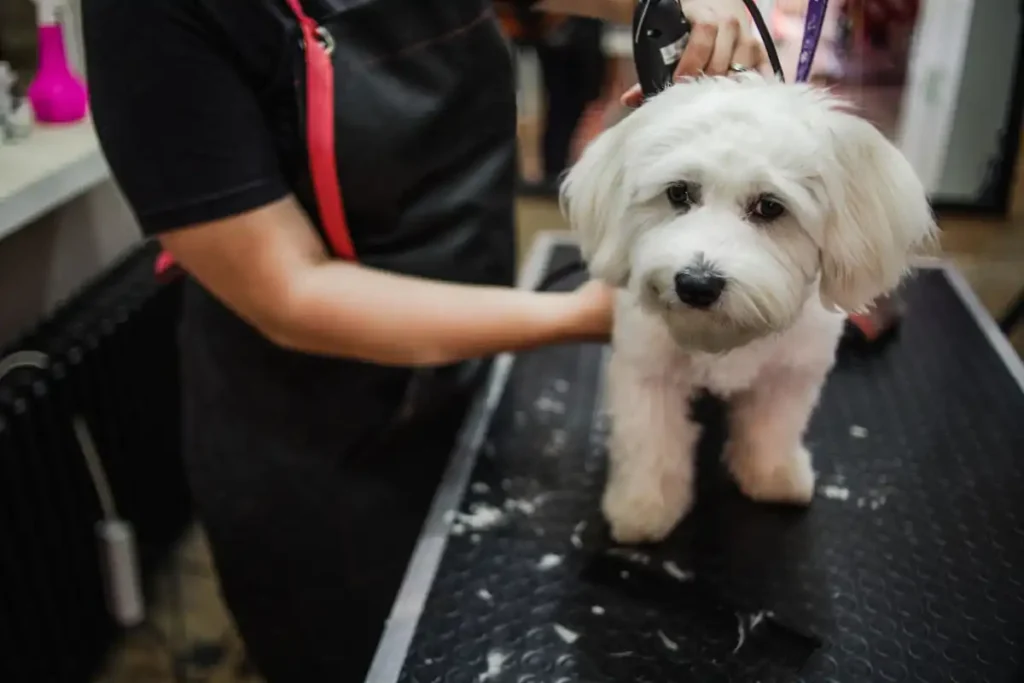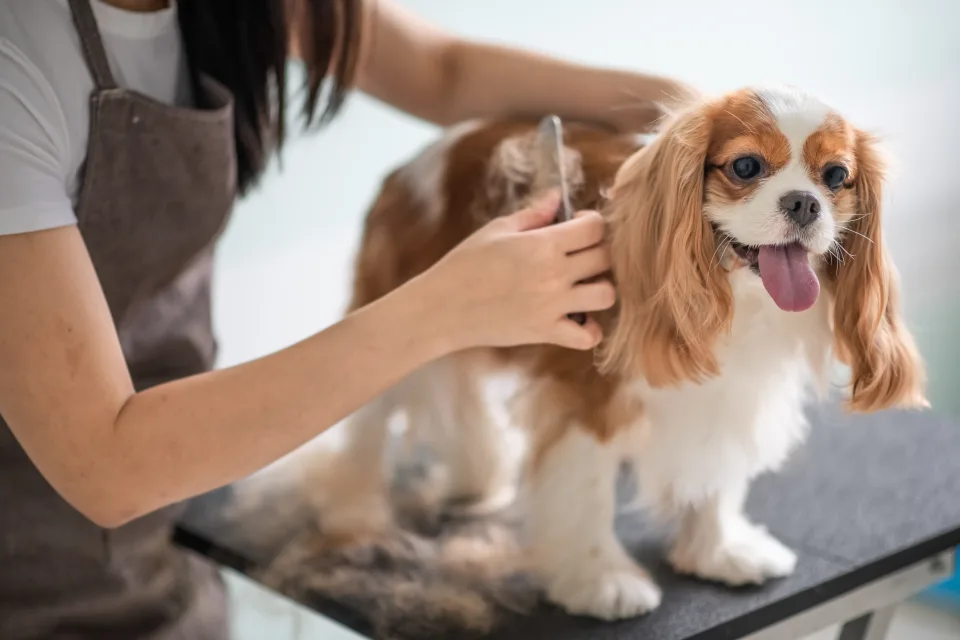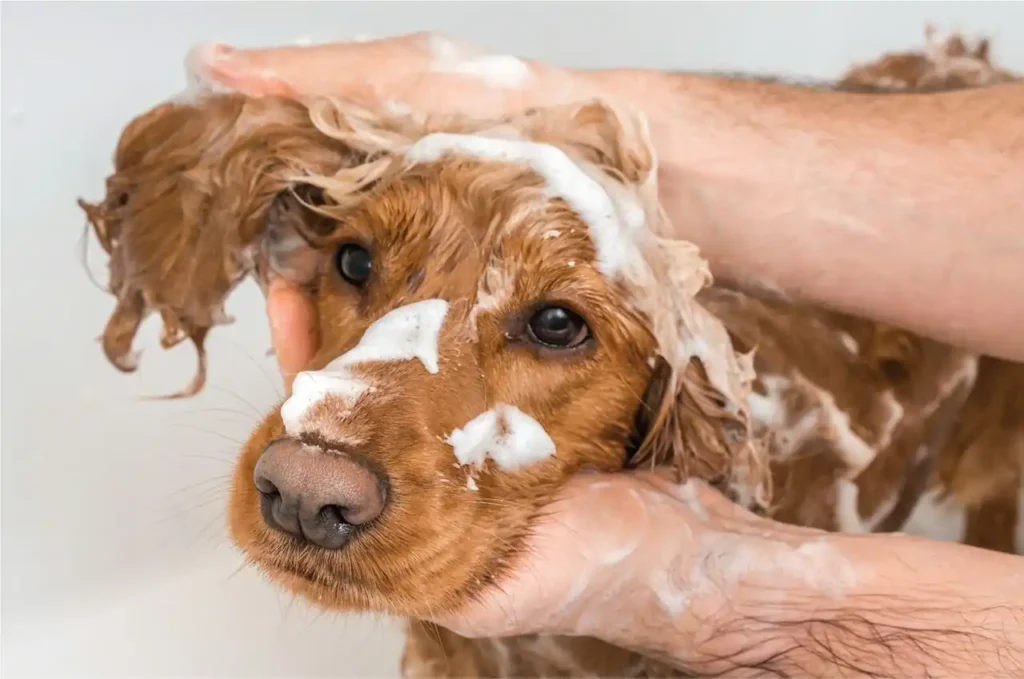Summer is here! Are you worried that your dog is too hot and you don’t know whether you should shave your dog or not? This article will take you to understand the types of dog hair, how to comb and wash, and list the advantages and disadvantages of shaving comparison, to help the hairy babies in the summer to keep cool and comfortable, let’s work together for them to create a healthy and bright appearance!

Can shaving your dog’s coat help cool it down? First, understand the principle of heat dissipation in dogs!
Even humans can’t stand the summer temperatures, so how do we cool down our furry pets? In fact, unlike human skin, dogs do not have sweat glands to dissipate heat, they mainly breathe through their mouths and noses and micro-sweat glands in their paws to achieve the cooling effect. When the dog feels hot, they will stick out the tongue to gasp quickly, using the tongue to evaporate water, and breathe out of the lungs heat; and the dog’s paws on the sweat glands is also one of the main ways to help dissipate the heat, when they walk around, through the paws of the feet and the ground contact, to dissipate heat, and then if you see wet footprints, it may be that the dog’s perspiration.
What should you pay attention to when shaving your dog’s coat?
Taiwan’s summer is very hot, in fact, appropriate to help the dog shaving is a good choice, but before deciding whether to help the dog shaved, in addition to the need to take into account the breed, skin condition and living environment and other factors, a lot of shaving attention should also pay attention to, after all, the hair has a protective role, so that the dog can withstand ultraviolet rays, to avoid sunburns, but also reduce the environmental stimuli, reduce the harmful substances directly on the skin allergies and other conditions, so please hair parents pay special attention to the following so that the furry children can be more safely implemented in the summer process. The hair can protect the dog from UV rays, avoid sunburn, reduce environmental irritation, and minimize harmful substances directly on the skin to trigger allergies and other conditions, so please pay special attention to the following hair parents, so that the furry children can be more safely implemented in the process of the summer heat.
🐕 Dog Shaving Note 1: Don’t shave all the way!
When shaving your dog, remember to keep at least 0.5 centimeters of hair to protect your dog’s skin from UV rays and allergens.
🐕 Dog shaving note 2: Choose the right tools
Choose to use the right tools for your dog’s hair type, such as combs, scissors or electric clippers, avoid using unsharp tools, and electric clippers are also recommended to be oiled regularly to minimize the occurrence of hair clipping and to avoid injury to your dog’s skin.
🐕 Dog shaving note 3: Shaving in the direction of hair growth
Shaving must follow the direction of hair growth to prevent damage to the hair follicles when trimming, resulting in the future growth of new hair, uneven lengths or unable to grow the situation occurs.
🐕 Dog shaving note 4: pay attention to the front limbs of the wolf claws
Some dogs may have degenerative toes, commonly known as wolf claws, which may be hidden in the hair on the inner side of the forelimbs, so special care should be taken when shaving to avoid accidental shaving.
🐕 Dog Shaving Note 5: Shaving Parts
Dog hair also has a protective effect, shaving parts should try to focus on the belly, chest, inner limbs and soles of the feet, etc., will not be the direct sunlight parts, to avoid going out when the sunburn.
🐕 Dog shaving note 6: after shaving and bathing
After shaving, it is recommended that the owner help the dog to take a bath to rinse off the cut hair; if there is allergy, it is recommended to use cooler water to reduce the discomfort and thoroughly rinse off the broken hairs to keep the body dry.
Dog Hair Revealed! How to tell if your dog has a single coat or double coat in a second!

The structure of a dog’s coat affects its ability to keep warm and dissipate heat, and is usually categorized into two types: single coat and double coat, so how can you tell which type your dog is? Here’s how to tell which type your dog is:
Dog Hair Type: Single Coat
This type of dog has only one layer of hair, which is usually short and sparse, so you can see the skin when you pull out the roots of the hair, common breeds such as Bichon Frise and Poodle. Due to the small amount of hair loss, both the dog itself and the environment, easier to take care of, but also more intolerant of cold, so for this type of dog, regular grooming and appropriate bathing frequency (usually once or twice a month) is particularly important in order to maintain the health and shine of the hair, single-layer coat dog breeds include chenery, doberman, chihuahua, poodle, Maltese and so on.
Dog Hair Type: Double Coat
Double-layered hair of the dog has an inner layer of fluffy hair and outer layer of hair, close to the skin soft fluffy hair can be replaced with the seasons to regulate body temperature, but it is also easier to fall out of hair in the summer to keep the skin breathable and dry; while the hair is more tough, with the sun, wind and other protection, such as Golden Retriever and Husky and other need to adapt to cold climates, most of the breeds for this type. Dog breeds with double coats include Golden Retrievers, Pomeranians, Huskies, Foxhounds, French Bulldogs, Shiba Inus, German Wolfhounds, Shepherds, Muffins, Corgis, Satsumas, etc. However, due to the humidity in Taiwan during the summer months, it is difficult for the dog breeds to adapt to the cold weather.
However, due to the humidity in Taiwan in the summer, shaving can help dissipate heat, but special attention should be paid to avoid shaving the hair, which will damage the protective layer of the hair and lose the function of temperature regulation.
A must-see for fur parents! 5 Tips for Maintaining a Healthy Dog Coat

If you want to keep your dog’s coat healthy, regular care and grooming is absolutely essential. Here are five tips to help owners learn how to properly groom their dog’s coat.
🐕 Dog grooming tip 1: Brush frequently
Daily or weekly brushing in the direction of hair growth prevents tangling and promotes blood circulation to maintain a healthy shine. Remember to use a comb or brush that suits the flow of the hair before combing, such as a bristle brush for short-haired dogs, or a metal needle comb for long-haired dogs.
🐕 Dog grooming tip 2: Occasional bathing
Use a special detergent suitable for their skin and hair to help keep the hair clean and reduce odor; however, the frequency of bathing depends on the breed of the dog and the living environment, usually once or twice a month. Summer can slightly increase the frequency of bathing, but still should not be too frequent, because the skin oil is also the key to smooth hair, too often bathing will cause oil loss.
🐕 Dog grooming tip 3: Regular Trimming
It is recommended to trim your dog’s hair regularly, especially the parts that are prone to knots, such as behind the ears, belly and limbs; be careful not to cut the skin when trimming, so it is best to use specialized pet scissors or ask a professional groomer to assist.
🐕 Dog grooming tip 4: Avoid Humidity
After bathing, you need to thoroughly blow-dry your dog’s fur to prevent moisture from causing skin problems or hair loss. It is recommended that you use a towel to soak up the moisture and then use a hair dryer on a low-temperature setting to slowly blow-dry the hair, and pay special attention to the paws and abdomen, which are prone to retaining moisture.
🐕 Dog grooming tip 5: Adequate Nutrition
Provide a balanced diet to ensure that your dog gets enough nutrients, and consider adding fish oil supplements for pets that contain Omega-3 fatty acids, which not only help with skin health, but also help with the shine of the coat.
It turns out that shaving has its drawbacks! The Pros and Cons of Shaving for Pets
Proper shaving can help reduce overheating and make your dog more comfortable during the summer months, but you need to weigh the pros and cons and take proper care of your dog. The following is a list of the pros and cons of shaving your dog’s coat to help owners make the right choice!
| Pros | Cons |
| Lower body temperature, help dissipate heat and reduce the risk of heat stroke. | Dogs are more likely to be exposed to the sun, increasing the risk of sunburn. |
| Shaving long-haired dogs can prevent tangles and make grooming easier. | Your dog’s skin may become sensitive and prone to injury. |
| A short shave makes it easier to check for and remove fleas, ticks and other parasites, keeping your dog healthy. | Shaving too short may damage the coat’s natural protective layer, making the dog less resistant to temperature changes and environmental stimuli. |
| Easier to wash and keep clean, helping to minimize the incidence of skin diseases. | Dogs may feel uneasy after shaving, which may affect their daily behavior and mood and take time to adapt. |
